
The AIgorythm project

Playwright and actor

Novelist

Writer and poet

Volleyball player

Italian-Peruvian naturalist and geographer

Singer and percussionist

Last Inca emperor

Politician, former prime Minister

Journalist and TV host

Poet

Inca warrior

Actor and comedian

Biophysicist

Poet

Doctor and researcher
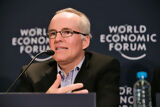
Businessman, Interbank group

Journalist and writer

Poet and writer
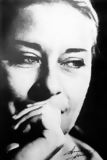
Singer and songwriter

Writer

Film director, Berlin Golden Bear winner

Football player

Writer and journalist

Doctor and scientist

Photograph

Chess player

Industrialist

Former general

Specialist in public health

Actress and singer

Afro-Peruvian music singer

Mathematician and engineer

Indigenous chronicler

Neurologist and anthropologist

Painter

Football player

National hero, military leader

Intellectual and reformer

Chef and entrepreneur
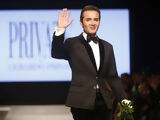
Fashion designer

Singer-songwriter

TV presenter

Marathon runner

Indigenous Peruvian chronicler

Theologian

Former national team captain

Economist and former health minister

Inca princess

Writer and television host

Folk musician

Poet and guerrilla

Former UN secretary-general

Chef, known for fusion cuisine

Football player

Peruvian aviation pioneer

Poet and artist

Marxist philosopher and writer

Industrialist and businessman

Novelist and ethnologist

Painter and muralist

Opera tenor

Fashion designer

Cardinal of Lima

Peruvian tennis player

Football coach

Leader of the indigenous rebellion

Military hero

Latin singer

War of the Pacific hero

The youngest mother in history

Politician

Creole music singer

Tennis player

Musician

Writer and politician

Politician and founder of the Christian Democratic Party

Founder of Sodalitium Christianae Vitae

Archaeologist and anthropologist

Military leader and politician

Television host

Actress and singer

Contemporary sculptor

Women’s rights activist

Beauty queen

Astrophysicist

Heroine of independence

Mathematician and archaeologist

Historian and anthropologist

Military figure and historical figure

Fashion photographer

Writer, Nobel Prize in Literature, Politician

Revolutionary leader

Environmental activist

Leader of the indigenous rebellion

Musician from Gaia band
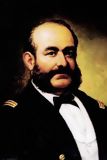
War hero

Military leader and politician

Chef, known for Nikkei cuisine

Volleyball coach and former player

Environmental activist

Television personality

Writer

Football player

Epidemiologist and former health Minister

Inventor and aerospace pioneer

Soldier and inventor

Rock singer

Chef and co-owner of Central restaurant

Painter

Football player

TV presenter and actress

Actor

Writer and historian

Journalist and lawyer

Archaeologist, founder of Caral site

Monk and Saint

Saint, patron of Latin America

Physicist and engineer

World champion surfer

Actress

Oncologist

Singer, Latin Grammy winner

Former mayor of Lima

Singer

Actress

Former football player

Painter

Former football player

Painter

Inca leader

Archbishop, saint

Leader of the indigenous rebellion

Revolutionary indigenous leader

Diplomat and intellectual

Sculptor and painter
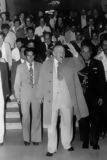
Political leader, founder of APRA

Lawyer and Former prime minister

Chef of Central restaurant

Former head of secret services

Popular singer

Fashion designer

Exotic music singer
Fernando de Szyszlo, born on July 5, 1925, in Lima, Peru, is recognized as one of the most influential artists in abstract art in Latin America. With a Polish father and a Peruvian mother, Szyszlo managed to combine his European heritage with his Latin American roots to create a unique body of work. His contributions marked a turning point in both Peruvian and international art, introducing new perspectives on abstraction while incorporating pre-Columbian cultural elements.
Fernando de Szyszlo grew up in a multicultural family, which greatly influenced his artistic approach. After studying architecture at the National University of San Marcos in Lima, he soon turned to painting, becoming a self-taught artist. In the 1940s, he traveled to Paris, where he was exposed to the major European art movements of the time, including abstract art and surrealism.
His travels across Europe allowed him to meet influential artists such as Pablo Picasso and André Breton. Although Szyszlo was deeply impressed by the European avant-garde, he quickly realized that his art needed to reflect his own cultural roots. It was then that he began to integrate symbols and myths from pre-Columbian cultures into his abstract work.
Fernando de Szyszlo’s style is characterized by a synthesis of geometric abstraction and references to Andean culture. He often used organic shapes and vibrant colors to create powerful compositions that evoked the Peruvian landscapes and ancient rituals. One of his main concerns was capturing the spiritual essence of pre-Columbian myths and legends while remaining committed to modern abstraction.
Among his most famous works is the series titled Cajatambo, which references a region in Peru known for its pre-Columbian history. In these paintings, Szyszlo explores themes such as death, rebirth, and the relationship between man and nature, all conveyed through stripped-down yet deeply symbolic abstraction.
For Fernando de Szyszlo, art was much more than a mere aesthetic expression; he believed that art played a crucial role in society. He often stated that art should be in tune with its time, while also being able to engage in dialogue with the history and traditions of a culture. For this reason, his work is often seen as a bridge between modern art and Peru's ancient traditions.
Szyszlo was also a staunch advocate of artistic freedom. He rejected any form of dogmatism in art and opposed the idea that artists should conform to the expectations of institutions or markets. His commitment to artistic independence inspired many Peruvian and Latin American artists to pursue careers outside conventional boundaries.
Fernando de Szyszlo exhibited his works in prestigious galleries and museums worldwide, including the Museum of Modern Art in New York, the Venice Biennale, and the Museum of Fine Arts in Lima. His work was widely praised for its ability to transcend geographic and cultural boundaries while maintaining a deeply Peruvian identity.
In addition to his work as an artist, Szyszlo also taught at the Pontifical Catholic University of Peru, where he influenced numerous generations of young artists. He played a key role in the development of the Peruvian art scene in the 20th century, helping to establish Lima as a hub for avant-garde art in Latin America.
Fernando de Szyszlo passed away in 2017, leaving behind an artistic legacy that continues to influence contemporary artists. His work is now recognized as a major milestone in the history of abstract art in Latin America, and his pieces are regularly exhibited in major museums worldwide. Through his exploration of myths and abstraction, Szyszlo created a unique visual language that continues to resonate with art lovers around the globe.
Fernando de Szyszlo is an iconic figure in modern Latin American art. His work, which blends contemporary abstraction with pre-Columbian symbolism, represents an invaluable contribution to global art. As an artist, teacher, and intellectual, Szyszlo left an indelible mark on the art world, and his influence endures today.